I'm looking to increase the output current drive of a high voltage op amp using a push pull amplifier. The OPA454 datasheet includes an application circuit to do exactly this, and includes some current limiting resistors:

As noted, \$R_3 = 20\Omega\$ provides current limiting and allows the op amp to drive the output when \$|V_O| < 0.7\$V (i.e. both transistors are off). I understand that \$R_3\$ provides current limiting by stealing the op amp's output current from the transistor that is on. But how do I choose the value of \$R_3\$ to set the current limit to a particular value \$I_{\text{MAX}}\$ (e.g. \$2.5\$A)? \$I_{\text{MAX}}\$ doesn't have to be too exact, it just needs to be in the desired range (e.g. \$\pm 250\$mA).
Also, how do I choose the values of the emitter degeneration resistors \$R_4\$ and \$R_5\$? I know they are used to prevent thermal runaway by reducing \$V_{BE}\$ (and thus \$I_C\$), but I think they will also affect \$I_{\text{MAX}}\$ because they will affect the voltage across \$R_3\$.
The purpose of this circuit is to generate an adjustable output voltage from about \$0\$V to \$+100\$V with \$I_{\text{MAX}} \approx 2.5\$A. I've got dual but unbalanced supplies (not the \$\pm 50\$V shown) to support the output voltage range. Based on the suggested transistors in the above application circuit, I will probably use the MJ15003/MJ15004. Frequency response is not a huge concern since the output has milliseconds to transition.
I would guess that the relevant specs for determining the resistor values are the op amp max output current and transistor \$h_{\text{FE}}\$ (the former affects the maximum \$I_B\$, which is multiplied by \$h_{\text{FE}}\$ to set the maximum \$I_C\$), but is there anything else I need to take into account?
Alternatively, is there a better way to limit the output current for this push-pull amplifier?


